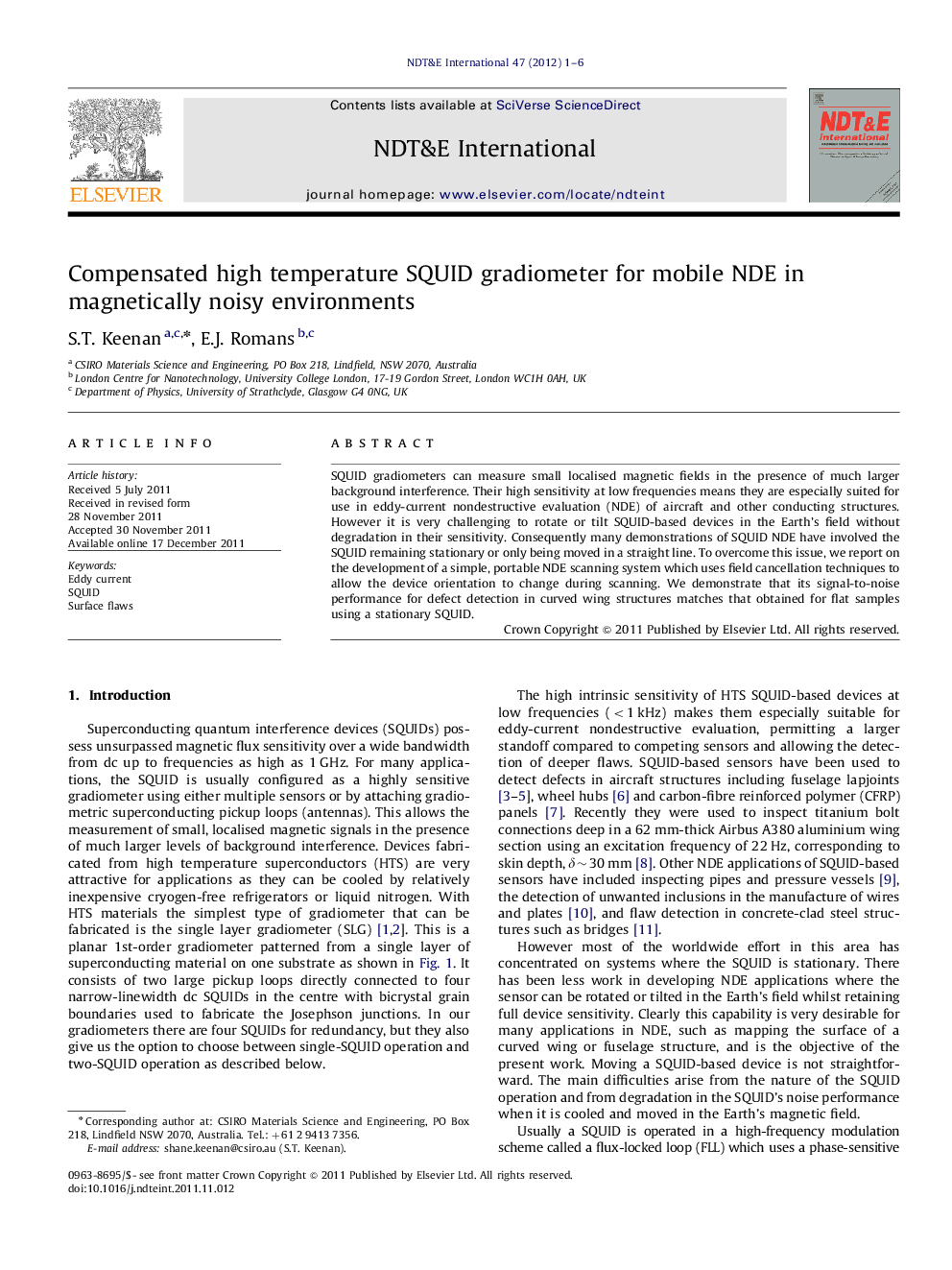| Article ID | Journal | Published Year | Pages | File Type |
|---|---|---|---|---|
| 295304 | NDT & E International | 2012 | 6 Pages |
SQUID gradiometers can measure small localised magnetic fields in the presence of much larger background interference. Their high sensitivity at low frequencies means they are especially suited for use in eddy-current nondestructive evaluation (NDE) of aircraft and other conducting structures. However it is very challenging to rotate or tilt SQUID-based devices in the Earth's field without degradation in their sensitivity. Consequently many demonstrations of SQUID NDE have involved the SQUID remaining stationary or only being moved in a straight line. To overcome this issue, we report on the development of a simple, portable NDE scanning system which uses field cancellation techniques to allow the device orientation to change during scanning. We demonstrate that its signal-to-noise performance for defect detection in curved wing structures matches that obtained for flat samples using a stationary SQUID.
► We address problems association with field cooling and moving SQUID based devices in the Earth's magnetic field. ► We describe a simple method to compensate for field changes experienced by the device during motion over the curved surface. ► This method allows the SQUID device to obtain full movement in the Earth's field without loss of performance. ► We investigate the signal-to-noise performance for defect detection in a curved wing structure. ► And demonstrate results comparable to that of a flat sample using a stationary SQUID.
